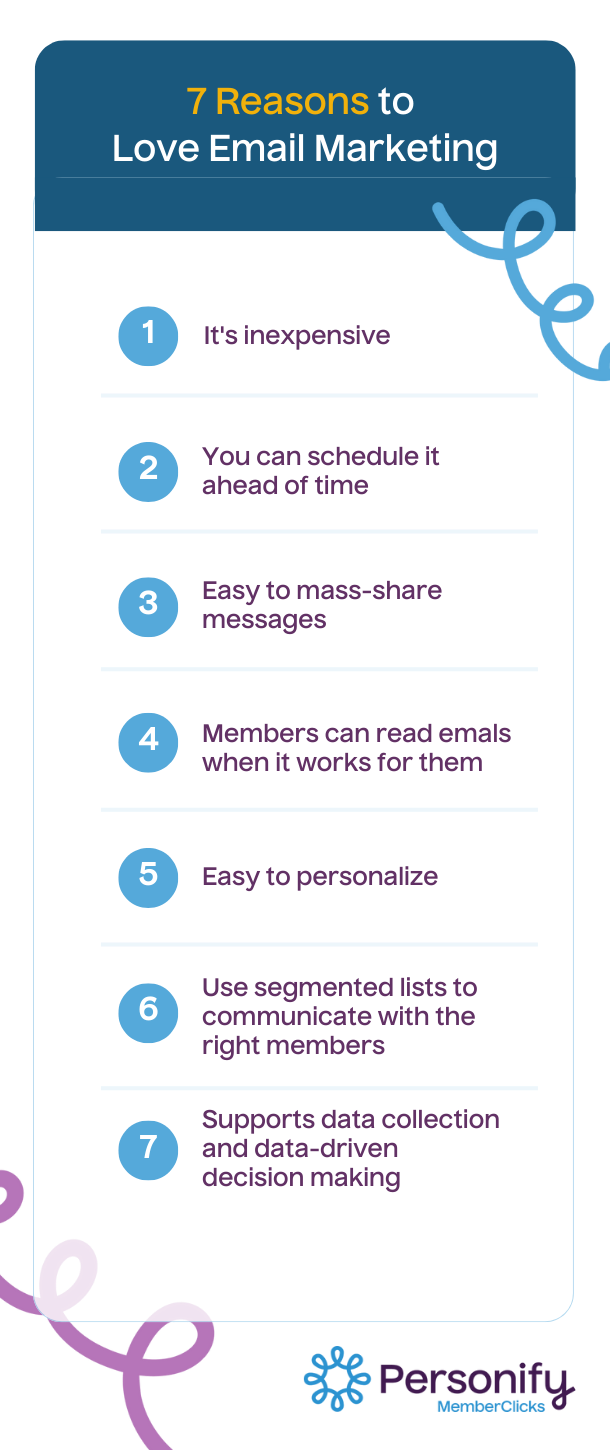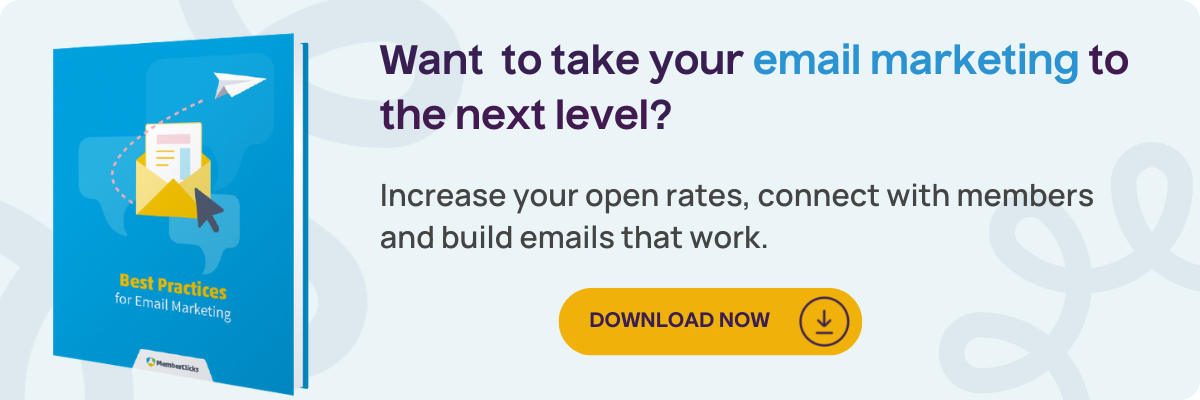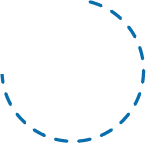No matter how much you might personally be overwhelmed dealing with your overstuffed email inbox, nonprofit email marketing is still one of the most powerful ways to reach your members, donors, and audience.
But how do you break through the email overwhelm everyone feels these days and get the membership renewals or donations your organization depends on? You have to be strategic! Maybe that means mastering the art of writing funny and engaging subject lines or not abusing your org’s newsletter to the point that recipients audibly groan when they see another email from you.
Creating a smart (and dare we say innovative!) nonprofit email marketing program is key to your success – and we’ll show you how to do it well by sharing industry best practices.
Is email dead?
As much as you might love to never receive another email from the spam bots that clutter your inbox, email is definitely not dead. In 2020, an average of 306.4 billion emails were sent every day.
What’s more, 72% of customers say they prefer email as their main channel for business communication. Even better for non-profits: for every $1 spent on email marketing, organizations get an average return of $42. That’s amazing ROI.
That also means that you should likely be using email more if you want to grow your non-profit’s or association’s revenue.
Why email marketing is important for your nonprofit association or chamber
So, why is non-profit and association email marketing so effective? Let us count the ways!

- It’s inexpensive: All you have to do is write the email and then send it out to your list of contacts. Easy!
- It can be scheduled: With an Association Management System or another email marketing solution, you can schedule your emails weeks in advance or set them up to be triggered by a specific action such as by sending out a thank you email after you receive a donation. This is an extremely efficient and easy way to connect with members. Perfect for budget strapped non-profits.
- You can mass-share messages: Sending an email takes the same amount of time when you’re sending it to 100 members or 10,000. Email allows you to easily scale your communication.
- Members can open it on their own schedule: Phone calls and automated texts demand your members attention right away. In contrast, email is a non-intrusive way to communicate.
- It can be personal: The best part of non-profit email marketing is that you can add fields that customize your messaging – including by adding the name of the member or donor automatically in the email.
- You can segment: Segmentation is the way. Email allows you to segment your audience to any group. Want to email people who came to your event last week? You can do that! How about people who have been members for years. That’s possible too! Communicate with the right people at the right time.
- It’s data-driven: Email programs can collect data about how individual and aggregate donors and members engage with your emails. Which types of emails are they more likely to open? What types of links are they more likely to click? You can then optimize your emails.
Before you send: Best practices
Are you ready to become a nonprofit email wunderkind? Here are our favorite email best practices:
1. Know why you’re sending it
You might be tempted to send out a general update with all your news and information but a smart marketer will stop themselves from making that fatal mistake! Make your email about something in particular. Is it a renewal reminder? Event announcement? General check in? Shorter emails perform better and by focusing on one topic per email you’re more likely to get people to read them.
2. Decide who you’re sending it to
The key to association email marketing is to segment, segment, segment. No one wants to receive every single email you organization sends. Targeting your email to a specific group also allows you to customize it to that group’s interests and concerns. Targeting new members? Members in a certain age group? Members with specific job titles? Write them a customized email.
3. Who should you send it from
Who you send your email from is important. Maybe it’s from the head of the board of directors or from an executive team member. Choose someone whose name people will recognize and who they’re more likely to open an email from.
4. What are you saying?
You have something to communicate but what’s the best way to do so? Lay out the info you want to include and collect all the details you need to write the email. Just make sure to keep it short. If you want to add additional info, link to a blog post instead. In those cases, use your email to tempt the reader to click to view the longer post.
5. When do you need to send it?
Sending out an email seems like an easy job. But at an association or non-profit there are often multiple people who need to read the email before its approved. Build a timeline for when you need the copy finished and when it will need to be approved by decision makers. You don’t want to miss your window to send an important email!
Building your email: Tips and Tricks
Okay. Let’s get into the nitty gritty of non-profit email marketing.
Create a great brand template
You want your email to look great and consistent with your organization’s branding. Many email programs will give you customizable templates to use for your organization’s emails. Or they’ll allow you to build your own templates.
Be mobile friendly
The last thing you want to do is write an email that no one can read on mobile since most people check their email from their phones these days. Make sure that the email program you’re using is mobile responsive. Before sending it out to your list, send a test email to check the formatting.
Ensure you’re compliant
No one likes spam. Not even if it comes from a non-profit or association. Look into your local email and privacy regulations to see what you need to include in your email to be compliant. This tends to include an unsubscribe button but some regions also might need to follow other rules.
If you live in the United States, your emails must be CAN-SPAM compliant. The CAN-SPAM Act is a federal law that sets the rules for commercial email and spells out tough penalties for violations – and trust us, those are some serious violations you don’t want to commit.
A few of CAN-SPAM’s main requirements are as follows:
- Don’t use false or misleading header information
- Don’t use deceptive subject lines
- Tell recipients where you are located
- Tell recipients how to opt out of receiving future emails from you
- Honor opt-out requests promptly
While it’s up to you to make sure your content is compliant, many email providers will actually take care of some of the CAN-SPAM preferences for you, such as the opt-out requirement.
For more information about CAN-SPAM requirements, please visit the Federal Trade Commission’s website.
Nail your call to action
The most important part of your email is the part where you tell them what they should do next. That’s your call to action. A call to action can ask the reader to buy a ticket to a fundraiser, renew their membership or make a donation. It might even just ask them to read a blog post. Make sure your Call to Action is compelling.
Craft a great subject line
You likely don’t open half of the marketing emails that you get – so what makes you open the ones you do? It’s usually because of a great subject line. Subject lines are the lynchpins of every nonprofit email marketing program. If you can master the art of subject lines your members will open, you’ll go far.
Here are some good ones:
- Learn how you helped last year’s scholarship winner
- This member just saved $1,200 with their membership discounts
- Five amazing speakers. The best lunch in town. Get your tickets now!
- Like us enough to renew for another year?
- We want to improve! Tell us why you didn’t renew
- You’ve been a member for 10 years! Up for another?
- We just introduced a new member perk! Will you benefit?
Subject lines that don’t give all the details away are more likely to be opened. Make them funny or silly. Add your member’s name to the subject line. Better yet, A/B test different subject lines every time you send out an email. You’ll slowly get an idea of what your members respond to for things like renewal notices and event emails.
Reporting and analytics: What does success look like?
You can’t just send out your emails and call the job done. Reporting and analytics are a critical part of optimizing your association email marketing so your open rates improve over time – and your organization benefits.
Reviewing email analytics helps:
- Understand how your members engage with your emails – are they opening them? Do they click through to your website? How long do they stay there or do they immediately bounce?
- Test open rates with certain subject lines – A/B testing is key to creating a strong email marketing program. You don’t know what your audience will respond to until you try. You might find that certain segments also like particular kinds of messaging more.
- Track actions taken with your CTA – tracking your success is key. How many people are clicking on a button and how many are signing up for an event or whatever else you might have asked them to do. You’ll want to know this to optimize future emails and to report to your board and leadership.
Building quality emails for your nonprofit associations and chambers
There you have it! Creating an effective non-profit email marketing program is easy. If you follow this guide, you’ll be able to maximize your email marketing program and increase conversions over time. That will mean more revenue for your organization. Who doesn’t want that?


















